Archived Blog Posts
5 Things to Avoid After Experiencing Water Damage
7/18/2023 (Permalink)
Water damage can be a distressing experience for any homeowner. Whether it's a burst pipe, a leaking roof, or a flooded basement, taking immediate action is crucial to mitigate the damage and prevent further complications. However, it's equally important to know what NOT to do after water damage occurs. In this blog post, we'll highlight five common mistakes to avoid to ensure the best possible outcome for your property and minimize losses.
Do NOT Delay Taking Action
One of the biggest mistakes you can make after water damage is delaying the cleanup and restoration process. Standing water and excess moisture can lead to mold growth, structural damage, and other long-term issues. Act promptly by contacting a professional water damage restoration company like [Your Company Name] to assess the situation and initiate the necessary steps for drying, cleanup, and restoration.
Do NOT Enter Standing Water without Proper Precautions
Entering standing water without proper precautions can pose serious health risks. The water may contain contaminants, bacteria, or hazardous substances. Avoid direct contact with the water and ensure that electricity to affected areas is turned off to prevent electrical hazards. Leave the water extraction and cleanup to trained professionals who have the necessary equipment and expertise to handle the situation safely.
Do NOT Neglect Documenting the Damage
Documenting the water damage is essential for insurance claims and restoration purposes. Take photos and videos of the affected areas, including any damaged items or structural issues. This evidence will support your insurance claim and help the restoration professionals understand the extent of the damage, facilitating the restoration process.
Do NOT Attempt DIY Restoration
While it may be tempting to tackle water damage restoration on your own, it's highly recommended to leave it to the professionals. Water damage restoration requires specialized equipment, knowledge, and experience to ensure thorough drying, dehumidification, and proper sanitization. Improper restoration attempts can lead to additional damage, mold growth, and potential risks.
Do NOT Neglect Contacting Your Insurance Company
After experiencing water damage, it's important to notify your insurance company as soon as possible. Familiarize yourself with your insurance policy and understand the coverage and claim process. Provide them with accurate information and the necessary documentation to initiate the claims process promptly. Working with a professional restoration company that has experience in dealing with insurance claims can help streamline the process and ensure a smoother resolution.
Avoiding these common mistakes can make a significant difference in the aftermath of water damage. Remember, time is of the essence when it comes to water damage restoration. Act swiftly, prioritize safety, document the damage, and involve professionals to handle the restoration process. By following these guidelines, you can protect your property, safeguard your health, and maximize your chances of a successful recovery.
For comprehensive water damage restoration services and expert guidance, you can rely on SERVPRO of Ozone Park/Jamaica Bay. Our experienced team is available 24/7 to handle all aspects of water damage restoration, from initial assessment to thorough cleanup and restoration, ensuring your property is restored to its preloss condition.
Protect Your Property with Roof Damage Mitigation: The Benefits and Process Explained
6/6/2023 (Permalink)
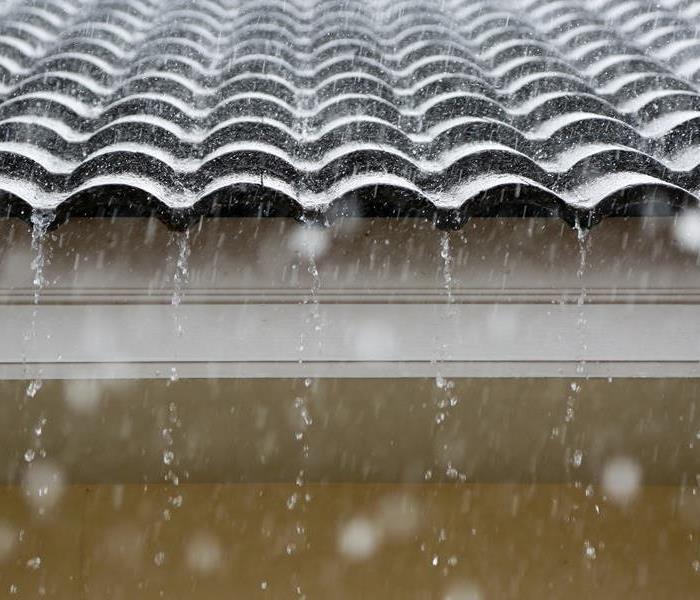 Contact a professional roofing contractor after a storm to perform a roof inspection.
Contact a professional roofing contractor after a storm to perform a roof inspection.
Roof damage can occur for a variety of reasons, including severe weather events, falling debris, and natural wear and tear over time. When left unaddressed, roof damage can lead to more significant problems, such as water damage and structural issues. This is where roof damage mitigation comes into play.
What is Roof Damage Mitigation?
Roof damage mitigation refers to the process of identifying and addressing potential issues with your roof to prevent further damage. This process typically involves a thorough inspection of your roof to assess any damage and determine the best course of action to prevent further issues.
The goal of roof damage mitigation is to protect your property from future damage while also minimizing repair costs. By addressing small issues before they turn into significant problems, you can save money in the long run and ensure the safety and integrity of your property.
The Process of Roof Damage Mitigation
The process of roof damage mitigation typically involves several steps, including:
- Inspection: The first step in roof damage mitigation is a thorough inspection of your roof. A professional roofing contractor will assess the condition of your roof, including any damage or areas of concern.
- Repair: After identifying any damage or areas of concern, the next step is to repair the roof. This may involve repairing or replacing damaged shingles or tiles, fixing leaks, and addressing any structural issues.
- Maintenance: Once repairs are complete, it's important to maintain your roof to prevent future damage. This may involve regular inspections, cleaning, and maintenance to ensure that your roof is in good condition.
Benefits of Roof Damage Mitigation
Roof damage mitigation offers several benefits, including:
- Cost Savings: By addressing small issues before they turn into significant problems, you can save money on repairs and prevent the need for a full roof replacement.
- Property Protection: Roof damage mitigation helps protect your property from further damage, including water damage and structural issues.
- Peace of Mind: Knowing that your roof is in good condition can provide you with peace of mind and help you avoid the stress and costs associated with unexpected repairs.
In conclusion, roof damage mitigation is an essential aspect of maintaining the safety and integrity of your property. By addressing small issues before they turn into significant problems, you can save money and protect your property from future damage. Contact a professional roofing contractor to schedule a roof inspection and determine the best course of action for your property.
The Persistence of Mold: Why Does it Keep Coming Back?
5/15/2023 (Permalink)
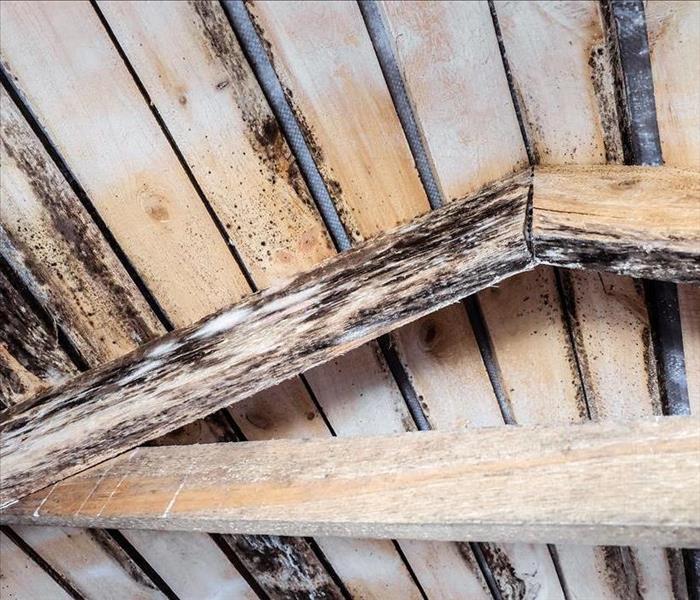 So why does mold keep coming back?
So why does mold keep coming back?
Mold is a common problem in many homes and buildings. Even if you clean it up and think it's gone for good, it can often return. So why does mold keep coming back? In this blog, we will explore the reasons why mold is so persistent and provide some tips on how to prevent it from returning.
Understanding Mold Growth
Before we can understand why mold keeps coming back, it's important to understand how mold grows. Mold is a type of fungus that thrives in warm, damp environments. It can grow on a variety of surfaces, including walls, ceilings, floors, and even furniture. Mold can cause serious damage to your home if left untreated, including structural damage and unpleasant odors.
Insufficient Cleaning
One reason why mold may keep coming back is insufficient cleaning. When you clean up mold, it's important to not only remove the visible growth but also the spores that can cause future growth. If you don't remove all the spores, the mold can easily regrow. In addition, if you don't address the underlying moisture problem that caused mold growth in the first place, it's likely that it will return.
Hidden Mold Growth
Another reason why mold may keep coming back is due to hidden mold growth. Mold can often grow behind walls, in ceilings, or under flooring, where it's not immediately visible. If you don't address the underlying moisture problem, the hidden mold can continue to grow and eventually become visible again.
Poor Ventilation
Poor ventilation is another common cause of mold growth. When there is insufficient ventilation in a room, moisture can build up and create an ideal environment for mold growth. This can occur in bathrooms, kitchens, and other areas of the home where moisture is often present. By ensuring proper ventilation, you can prevent mold growth and reduce the risk of it returning.
Moisture Problems
Moisture problems are one of the most common causes of mold growth. If you have a leaky roof, a plumbing leak, or poor drainage, it's likely that moisture is building up in your home and contributing to mold growth. By addressing the underlying moisture problem, you can prevent mold growth and reduce the risk of it returning.
Preventing Mold Growth
The best way to prevent mold growth and prevent it from returning is to control moisture levels in your home. This means fixing any leaks or water damage immediately, using a dehumidifier in damp areas, and ensuring that your home is well-ventilated. It's also important to clean up any spills or moisture promptly to prevent mold from growing.
In conclusion, mold can be persistent and difficult to get rid of if you don't address the underlying causes of its growth. By understanding the reasons why mold keeps coming back and taking steps to prevent it, you can keep your home healthy and mold-free. If you are struggling with mold growth in your home, it's important to contact a professional restoration company, like our SERVPRO of Ozone Park/Jamaica Bay team to help identify the underlying causes and develop a plan to prevent it from returning.
Removing Smoke Odor and Damage: How SERVPRO of Ozone Park/Jamaica Bay Can Help
4/10/2023 (Permalink)
 Call the professionals for smoke odor removal in your home
Call the professionals for smoke odor removal in your home
Smoke odor damage is a common problem homeowners face after experiencing a fire or smoke event in their home. Smoke odor damage occurs when smoke particles penetrate surfaces such as walls, ceilings, and floors, leaving behind a foul odor that is difficult to remove.
How is Smoke Odor Damage Difficult to Mitigate?
One of the main reasons smoke odor damage is difficult to mitigate is that smoke particles are incredibly small and can penetrate almost any surface. This makes it challenging to locate and remove all of the smoke particles, resulting in lingering odors that can last for years if left untreated.
Additionally, different types of smoke can produce different types of odors, further complicating the mitigation process. For example, a fire that burns natural materials such as wood or paper will produce a different odor than a fire that burns synthetic materials such as plastics or rubber.
Who Can Remove Smoke Odor and Smoke Damage?
While smoke odor damage is difficult to mitigate, it is not impossible. Professional smoke odor removal companies, such as SERVPRO of Ozone Park/Jamaica Bay, have the necessary equipment and expertise to locate and remove smoke particles and eliminate the odor left behind.
SERVPRO of Ozone Park/Jamaica Bay uses specialized equipment such as air scrubbers, thermal foggers, and ozone machines to remove smoke particles and odor from surfaces and the air. They also use cleaning solutions specifically designed for smoke odor removal to clean affected surfaces thoroughly.
In addition to removing smoke odor, SERVPRO can also help with other types of smoke damage, such as soot and ash residue. They have the expertise to clean and restore furniture, carpets, and other personal belongings affected by smoke damage.
Mitigating Smoke Odor Damage and Restoring Your Home
In conclusion, smoke odor damage is a difficult problem to mitigate due to the small size of smoke particles and the different types of odors produced by different types of fires. However, professional smoke odor removal companies like SERVPRO of Ozone Park/Jamaica Bay can help eliminate the odor and restore your home to its preloss condition. If you have experienced a fire or smoke event in your home, contact our SERVPRO team for assistance in removing smoke odor and damage.
Our process for removing smoke odor and damage ensures that your home is thoroughly cleaned and restored to its preloss condition. The benefits of professional smoke odor removal include improved indoor air quality, elimination of lingering odors, and a safer, healthier home environment.
Don't let smoke odor damage continue to impact your home and quality of life. Give our team a call today!
6 Common Kitchen Hazards
2/13/2023 (Permalink)
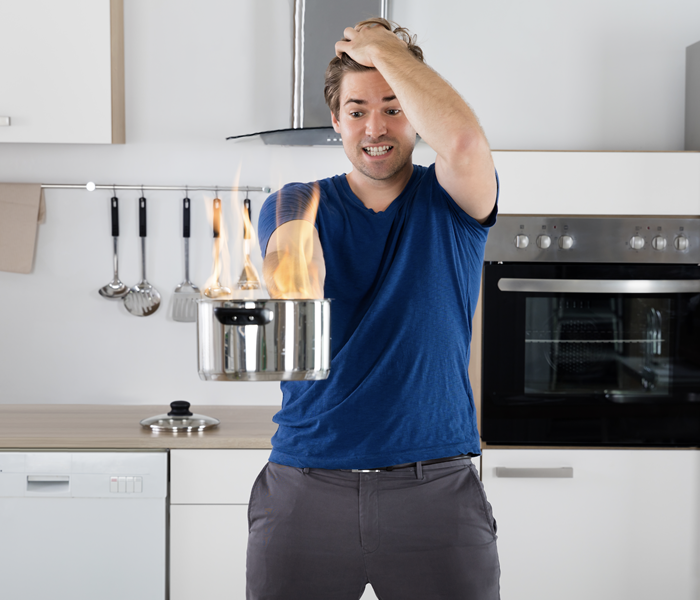 It's important to be aware of the dangers in your kitchen and take steps to avoid them.
It's important to be aware of the dangers in your kitchen and take steps to avoid them.
A kitchen is a place of great activity. It is where we prepare our meals and snacks, where we store food, and often even where we relax at the end of a long day. However, it can also be one of the most dangerous places in the home if you are not careful. Here are six common kitchen hazards to watch out for.
Overloaded Outlets
Overloaded outlets are a common problem in many homes. If you have too many appliances plugged into an outlet, or if you're using a power strip with too many devices connected to it, it's easy for the circuit breaker to trip and shut off power to the entire room. It is also a recipe for electrical fires.
Burns
Burns are common in the kitchen, and many of them are preventable. Avoid touching hot surfaces with your hands: This is a simple accident that can be avoided by wearing oven mitts when handling hot items, or using tongs or other tools instead. Remember to always place pan and pot handles away from burners.
Cuts
Cuts are among the most common kitchen injuries. They can be prevented by using a cutting board and sharp knife, as well as avoiding using your hand as a cutting tool and never cutting towards yourself.
Fires
A kitchen fire can start from many different sources: grease or oil splatters on hot surfaces like an electric burner or stovetop; oil spills left unattended; unattended cooking; and electrical wiring malfunctions or short circuits.
If you have a fire extinguisher, make sure it is in a location where everyone can see it, and that everyone knows where it is. If you have a fire, stay calm and call 911.
Gas Leaks
Gas leaks are likely to occur in your kitchen due to the high use of appliances that use natural gas such as ovens and stoves. Natural gas is a colorless, odorless, flammable gas. It can be found in the air we breathe and comes from natural sources like decaying vegetation and animal waste. Natural gas leaks can be dangerous because they can cause fires and explosions.
Hidden Water Leaks
A hidden water leak is one that you may not even know about. It can cause serious damage to your home and lead to mold growth, which has implications for you and your property. Common leaks seen in kitchens include dishwasher leaks, refrigerator leaks, and pipe leaks.
It's important to be aware of the dangers in your kitchen and take steps to avoid them. Keeping your home safe is a responsibility that you can't take lightly. If your home does suffer from a kitchen fire, don't hesitate and give our SERVPRO of Ozone Park/Jamaica Bay team a call for all your cleanup and restoration needs.
How To Prepare Your Home for a Blizzard
12/13/2022 (Permalink)
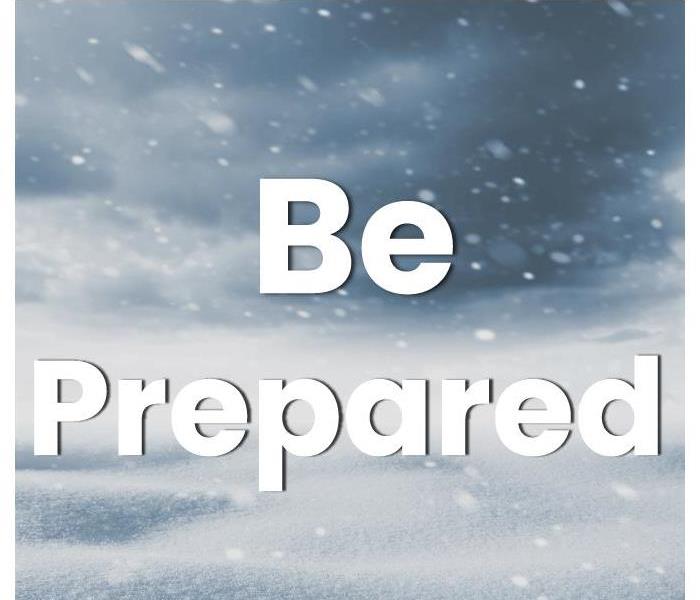 Be prepared to face a blizzard at any time of year.
Be prepared to face a blizzard at any time of year.
Prepare Your Home for a Blizzard
If you live in a region that sees blizzards, then you know how nerve-wracking it can be to be caught unprepared. Blizzards are powerful storms with high winds and heavy snowfall — and they can happen quickly. Fortunately, there are some simple steps you can take to prepare your home for a blizzard.
Take some simple steps to prepare before a blizzard happens.
- Keep a list of emergency numbers handy.
- Have a plan in case you are stranded.
- Have a first aid kit on hand.
- Have enough food and water for your family.
- Stock up on flashlights and batteries, as well as blankets and sleeping bags to stay warm.
Keep Snow Removal Equipment Accessible
Keeping your snow removal equipment at the ready is one of the most important steps you can take to prepare for a blizzard. Snow shovels, snowblowers and snow brushes should be stored in an easily accessible spot.
Inspect Your Fireplace and Chimney
One of the most important steps you can take to prepare your home for a blizzard is to make sure that your fireplace and chimney are in good working order. The following are some tips for ensuring that your fireplace and chimney are ready for the storm:
- Inspect the fireplace and make sure it is clean. Remove any debris from inside of it, as well as from its surrounding areas.
- Check the flue to see if it has any cracks or holes, which will allow cold air to seep in during a blizzard. If there are cracks or holes in the flue, they should be repaired immediately with duct tape or caulk before bad weather hits so as not to cause carbon monoxide poisoning during an emergency.
- Make sure all electrical appliances are turned off before attempting any repairs on gas-powered heaters or fireplaces (as these can become extremely dangerous when operated improperly).
Stock Up on Food, Water, and Supplies
The first step to blizzard preparation is to stock up on food and water. This is especially important if your family does not have any way of getting access to supplies for several days. If you live off the grid or in an area where power may be cut off, be sure to keep plenty of non-perishable foods around. You will also want ample bottled water, both for drinking and sanitation purposes; plan for one gallon per person per day.
In addition, it is wise to have emergency supplies on hand such as batteries (for flashlights), first aid kits, matches/lighters in case there's no electricity or gas running in your house once the storm hits (which could mean no hot showers). Having these basics covered means nothing can stop you from getting through this thing safely!
Protect Your Pets
You'll want to make sure your pet has a warm place to stay, as well as enough food and water. If you need to evacuate, don't forget your pets! Keep an eye on their surroundings for any signs of danger (such as downed power lines or blocked roads) so that they can be kept safe in the event of a storm.
Make sure that you have a collar with identification tags on it—this is especially important if there's ever an emergency where they could get lost, such as during heavy snowfall or flooding when visibility is poor.
If possible, keep your dog on his leash whenever he's outside playing so that he doesn't cause damage or harm others around him if he gets too excited by all the fun things happening around him (like kids snowball fights).
Check Your Car’s Emergency Kit
It’s also wise to make sure your car’s emergency kit is in good condition and ready for use. At least once a year, take all the items out of your trunk and check them off against a list of what should be inside. If any are missing, add more of those items to next year's shopping list. The same goes for clothes and blankets you keep in there: make sure they're clean and not ripped or damaged in any way. And when it comes time to use these supplies in an emergency, don't forget that you can also use them for warmth (especially if you're stuck indoors).
If the worst happens and roads are blocked by snow or ice, don't expect help anytime soon! Do what you can by shoveling roadways around your home so that emergency vehicles have better access — not just because they might save lives but also because they'll give back some sense of normalcy during uncertain times like these!
You should be prepared to face a blizzard at any time of year. Even if you don’t live in an area that gets a lot of snow, there are still other types of extreme weather that could affect your home and its surroundings. The best way to prepare for any potential emergency is by taking the time now to get ready. You never know when disaster might strike, so it’s better safe than sorry!
What Is Secondary Damage and What Types of It Exist?
11/8/2022 (Permalink)
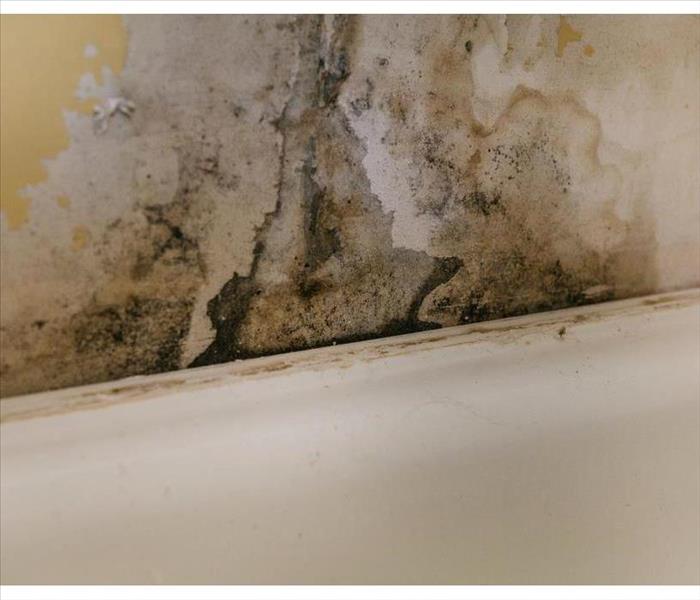 Water damage can lead to mold growth
Water damage can lead to mold growth
What is Secondary Damage and What Types of it Exist?
When your home has been damaged by a natural disaster, the last thing you want to deal with is secondary damage. Secondary damage refers to structural damage that occurs when the primary damage remains unaddressed. There are two types of secondary damages: biological and mechanical. Biological refers to mold and mildew growth, while mechanical refers to rusting, corrosion, and warping. Some secondary damage has to be dealt with right away, while others are more manageable. If you don't handle this type of damage properly, it could lead to more serious issues down the road like premature structural failure or even structural collapse! If you're wondering how we can help repair your home after an unexpected incident occurs: our team of experts at SERVPRO of Ozone Park/Jamaica Bay will get started on making sure your property is safe again as soon as possible!
What Is Secondary Damage?
Secondary damage is damage that occurs after the primary damage. For example, if a flood or fire cause damages to your home, it will most likely be necessary to replace or try and salvage water-damaged items.
When secondary damage occurs, it's best to call in professionals who can help assess the situation and determine how much of the initial problem they can repair themselves before calling in a restoration company.
Types of Secondary Damage
Secondary damage can be either biological or mechanical, with the former including mold and mildew growth, and the latter including rusting, corrosion, and warping.
For example: if you don’t get your car into a shop right away after you notice an oil leak, it will only worsen and become more expensive to fix later.
Secondary Damage Refers to Structural Damage That Occurs When the Primary Damage Remains Unaddressed
This can happen with or without the presence of a disaster if the primary issue is not addressed. Secondary damages are often caused by natural disasters, but they can also be caused by non-disaster factors, like neglecting maintenance on your home or leaving a broken window open during a storm.
When should you call a restoration company? If you notice any of the following signs, it's time to call in an expert:
- Your home or building has suffered water damage from flooding or other sources that shouldn't have happened
- The odor of mould is present in your home (if left untreated)
If you suspect that your home has been affected by secondary damage, immediately contact us. We will come out to your home in Ozone Park, NY and assess the damage. We will provide a free estimate, and we can work with you to get your home back to normal as quickly as possible.
Our team is on standby 24/7. We can help you with any secondary damage your property may be facing. Don’t hesitate to call us at (347) 233- 2305 for an estimate and more information about our services!
What Does Commercial Property Insurance Policy Cover?
10/12/2022 (Permalink)
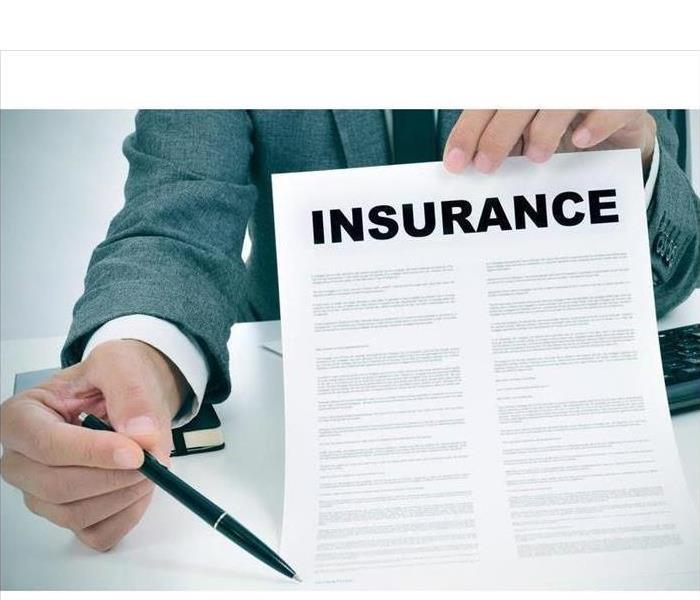 The commercial property insurance policy covers fire damage to the building and its contents.
The commercial property insurance policy covers fire damage to the building and its contents.
There are few things more devastating to a business owner than a fire that rips through the property. Not only are you dealing with the loss of your items, but you’re also out of business until everything is restored. If this is the situation you find yourself in, it’s important that you contact a fire damage restoration service as soon as possible.
What Does Commercial Property Insurance Cover?
The commercial property insurance policy covers fire damage to the building and its contents. It also covers water damage, theft, vandalism, and malicious mischief.
When you are looking at getting a commercial property insurance policy it is important to get the right coverage for your needs. Some things that you may want to investigate including:
- Structural coverage - this type of coverage will cover repairs needed due to damage from fire, windstorm or any other covered cause that affects your building structure (exterior walls).
- Contents coverage - this type of coverage will pay for losses caused by fire or lightning primarily if they occur inside the building but do not affect its structure (interior walls, ceilings etc.)
Learn about your coverage and how you can get the compensation you need to help get your business back on track.
If you have suffered fire damage, the first thing to do is contact your insurance company and ask them to send an adjuster to inspect the damage and give you a claim estimate. If your property is insured, they will assess the fire damage and determine whether it's covered by your policy.
If it turns out that the fire is covered by your policy, you'll need to file a claim with them. You may also have other options for getting compensation for any losses. In addition to filing a claim with your insurer, you can pursue some other avenues for recovering financial losses from fires:
- Insurance Adjusters - An insurance adjuster works for insurance companies whose job is often similar but not exactly identical as those belonging within law firms' tort departments.
There are few things more devastating to a business owner than a fire that rips through the property.
If you own a commercial property, it’s important to understand the coverage that your insurance policy offers. We all know what fire can do to a property and business, but few realize how much of an impact this type of damage has on the owner’s wallet.
Here are some things to consider if you find yourself in this situation.
If this is the situation you find yourself in, it’s important that you contact a fire damage restoration service as soon as possible. You will need to have an estimate of the damage done to your property, and if possible, get some input from an insurance agent on how much they think they can cover.
In addition to making sure that your business can continue operations after a fire has damaged its office space, you also need to make sure that any data stored on computers or other electronic devices is backed up so it can be restored once repairs are completed. If it seems like things are going well and repairs are progressing smoothly, take time out of your busy schedule for some much-needed rest and relaxation—you deserve it!
Will Your Insurance Pay for Fire Damage?
Fire damage is one of the most common causes of property damage. If you're looking to make sure your commercial property insurance policy covers fire damage, it's important to remember that not all policies will cover this. Some insurance companies will pay for fire-related damages, while others won't.
If your insurance does cover fire damage, it's worth checking with your insurance company to see exactly what they'll pay for. An insurance company will often cover the cost of repairs after a fire breaks out at your business—but not necessarily loss of business or income during that time period as well. It's also important to understand whether any pre-existing conditions will affect their coverage: if there were preexisting issues with electrical wiring in your building before the fire started, some policies may exclude those types of damages from coverage (even though they were caused by an external force).
If you are looking for the right commercial property insurance to cover your business, call us today. We can help you find an option that works best for your needs and budget.
3 Common Causes of Basement Floods
8/27/2022 (Permalink)
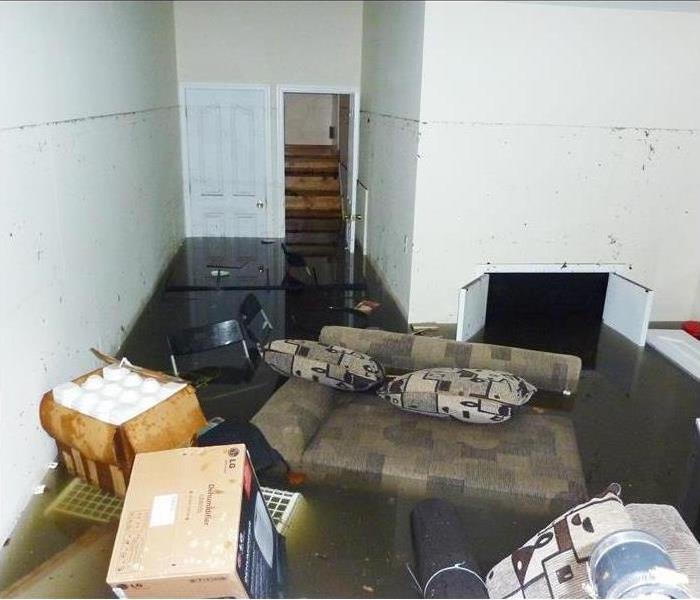 A basement flood is a destructive and stressful situation
A basement flood is a destructive and stressful situation
Steps To Protect Your Home From a Basement Flood
A basement flood is a destructive and stressful situation that homeowners in Jamaica Bay, NY want to avoid. Prevention is key, and there are ways you can protect your home if you are familiar with the causes of water leaks. Here are the most common causes and steps you can take to protect your home.
1. Improper Storm Drainage
When water builds up on the roof or landscape near your home, it will make its way to the lowest point. This is often the basement or crawl space. To prevent water damage, ensure that you clear the gutters of leaves and debris seasonally. Check that the downspouts are aimed away from the house so that water has a clear path to drain into the landscape. If your home sits on a slope, make sure that the ground is properly graded so that water cannot collect and leak into the foundation.
2. Inadequate Sealing
Another common cause of a basement flood is inadequate sealing of the floors and walls. If you notice any damp areas where moisture or mold is present, it’s possible that the area needs to be assessed by a mold remediation specialist before it is professionally resealed. Mold can cause serious damage to the materials of your home, and if left untreated will continue to spread as long as moisture is present.
3. Damaged Outdoor Systems
Leakage from the underground water systems around your home are another way your house can be flooded. Sprinkler systems and piping that carries water into city storm drains are vulnerable to damage from age and weather. If you find a leak that doesn't seem to originate from inside your home, an external system may be the culprit.
Knowing the main causes of a basement flood can help you notice issues before they becomes a bigger problem. If you’re unsure about anything you see, it’s best to call a professional to get an assessment to ensure the proper repairs are made.
Three Ways to Prevent Bathroom Mold Growth
8/27/2022 (Permalink)
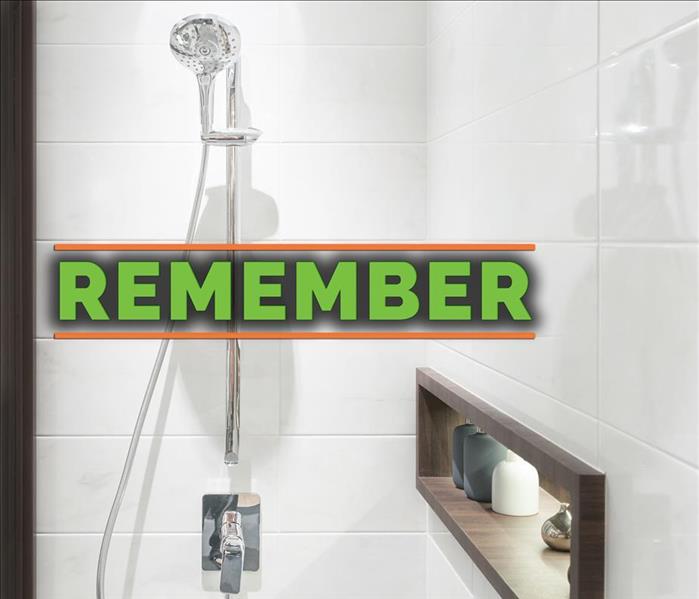 Remember to turn on ventilation fans in bathrooms while showering to lessen mold growth
Remember to turn on ventilation fans in bathrooms while showering to lessen mold growth
How To Prevent Mold Build Up
Few things are more discouraging to new homeowners than finding an established colony of mold. Since mold often thrives where an accumulation of moisture has occurred, you should always avoid water damage at all costs. Since bathrooms are especially likely to hold moisture, there are a few things you can do to prevent mold buildup from setting in.
1. Always Run the Fan After a Shower
Most bathrooms have built-in fans for a reason. By airing out your space, fans evaporate water and dry wet surfaces. This creates an environment that is hostile to the development of mold colonies. Make sure that you are aware of any moisture that may have spilled on the floor or collected in low areas. Mold growth is especially likely on porous surfaces, such as drywall or wood.
2. Move Objects Frequently and Dry Surfaces
Cracks in flooring and drywall aren't the only places moisture can accumulate. When objects, such as shampoo bottles, or cosmetic products are left standing for long periods, moisture trapped underneath them can cause water damage. This is especially likely in cabinets where objects are often left for long periods of time. Always move objects in your bathroom and dry the surfaces underneath them.
3. Clean With Bleach, Detergent, and Sealer
A common way for moisture to infiltrate your bathroom walls is through crumbling grout. For complete bathroom mold prevention, squeegee your shower walls dry before carefully patching cracked grout. Because bleach is an effective fungicide, you can remove existing patches of mold by scrubbing them with bleach or a detergent containing bleach. Always cover your face when doing this, and be sure to treat all of the surfaces you are concerned about.
If you have had water damage in your Queens, NY, home that has resulted in a mold infestation, contact a mold remediation expert who can provide you with the proper materials and experience to handle your problem. An intensive cleanup can be tricky, so you should leave larger infestations to the experts.
Tips for Making Your Dryer Fire Safe
8/27/2022 (Permalink)
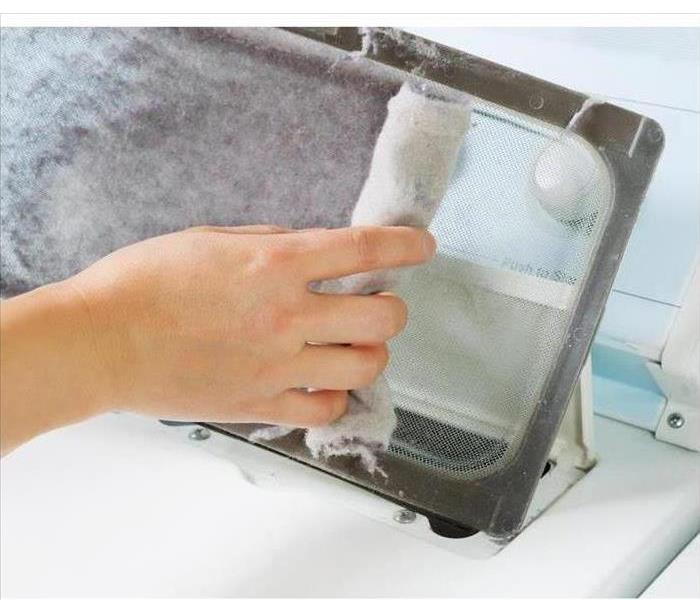 Prevent a dryer fire in your home
Prevent a dryer fire in your home
You can bet that any appliance in your home in Whitestone, NY, has been implicated in a home fire at one time or another. Your clothes dryer is no exception. That is because the dryer works by heating up either through an electrical or gas connection. The warmth you feel when retrieving the clothes from the dryer is evidence of enough heat to cause a lint fire. Therefore, it makes sense to treat your dryer accordingly. This means making sure it is well maintained and that the buildup of lint is cleared out from time to time. This will reduce the chances of a dryer fire, and it will probably improve the performance of your appliance.
Steps for Removing Lint
The process begins with a thorough cleaning of the lint screen. This takes six simple steps and will lessen your chances of a lint fire:
- Locate the screen
- Pull it out
- Remove lint by hand
- Wash the screen
- Vacuum out the vent
- Replace
The exhaust hose is also an area where you might see lint buildup. This should be cleaned, too, by removing the hose and shaking out the lint or using a brush. Finally, you should take a look at where the dryer vents out of your home. Any lint in this area should be removed by hand or by a vacuum. Whenever you have service on your dryer, you can also ask the service person if they can look out for lint buildup.
Steps for Dealing With a Lint Fire
If a fire does break out, you will probably need help dealing with fire damage. This requires a high level of training and experience to rid a home of the effects of smoke, soot, water and flames. A professional fire remediation franchise has seen it all. The technicians will employ a variety of cleaning methods and restoration principles to get your home in good shape. By keeping your dryer in good shape, though, you limit the chances of a home fire.
5 Ways to Prepare Your Business to Face a Storm
7/29/2022 (Permalink)
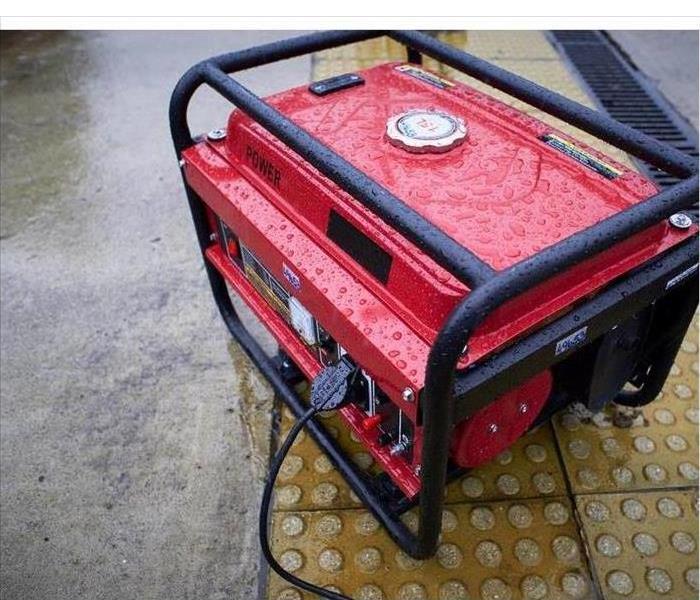 Install a backup generator to supply your building with power.
Install a backup generator to supply your building with power.
Keep Your Property, Business And Employees Safe In The Event Of A Severe Storm
Protecting your commercial building in Queens, NY, is an important part of being a business owner. Disasters, such as severe weather, excess flood water and unwanted mold growth, can strike at any time. The following tactics can help you keep your property, your business and your employees safe in the event of a severe storm.
1. Subscribe to an Emergency Alert System.
Subscribing to a credible emergency alert system can help you stay up to date on severe weather activity. Pay attention to what the authorities have to tell you and make sure to follow their directions if they instruct you to evacuate.
2. Create and Practice Your Storm Evacuation Plan.
Meet with your employees to draft and discuss potential evacuation plans. Once you create an effective strategy, you need to make sure to regularly practice emergency protocol with all of your employees. This can help eliminate accidents and unnecessary panic if flood water does sweep through your building.
3. Protect Important Documents.
A flooded building can put both physical and electronic documents in peril. Seal physical documents in waterproof containers and place them on elevated shelves that are at least one foot above the projected flood level. You can protect electronic documents from water damage by making multiple backup copies and storing them in the Cloud.
4. Trim Overgrown Trees and Shrubbery.
Overgrown tree branches can quickly become dangerous projectiles in the event of a storm. Make sure to regularly trim back any plant growth that could potentially inflict storm damage on your building's roof or windows.
5. Invest in a Backup Power Supply.
If the flood isn't severe enough to warrant an evacuation, you want to make sure that your employees can continue to conduct business. Install a backup generator to supply your building with power and reduce the amount of lost income.
The above precautionary measures can help you protect your property, business and employees from damage caused by severe storms and rising floodwater. If your building has fallen victim to flooding or storm damage, make sure to contact storm remediation professionals as soon as you can.
What Personal Protective Equipment Should Your Remediation Crew Use?
7/24/2022 (Permalink)
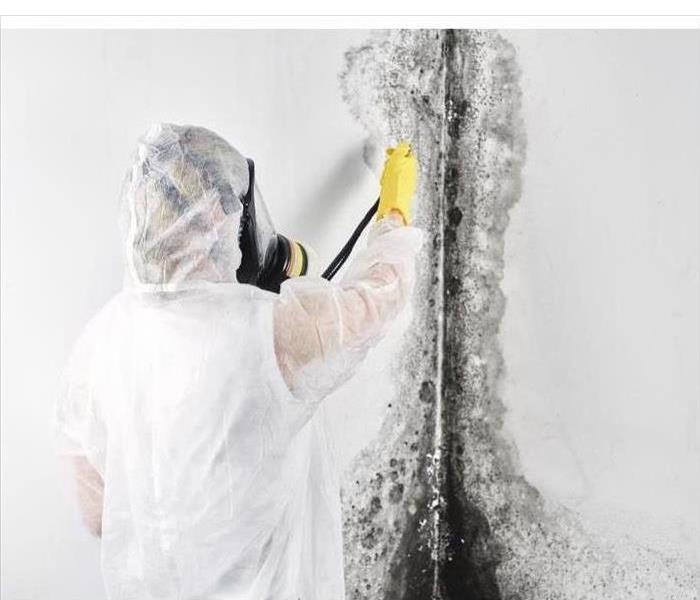 Mold remediation in Rosedale, NY
Mold remediation in Rosedale, NY
What Personal Protective Equipment Should Your Remediation Crew Use?
Mold spores are a commercial hazard. They spread quickly, creating growths throughout a building. When that happens, operations must cease, halting revenue. Stopping the reproduction, then, should be a commercial owner's top priority. A mold remediation company in Rosedale, NY, tends to the matter, removing contamination and sanitizing the space. To avoid breathing in the spores or moving them into other areas, the crew should protect themselves by wearing appropriate safety gear. Expect the staff to use the following four pieces of equipment.
1. Face Mask
During cleanup procedures, the crewmen may have to tear out structural pieces. When this happens, the spores can enter the air. Workers should wear a respirator mask that filters out the mold particles. Typically an N99 mask suffices.
2. Shoe Covers
Don't permit microbes to move from room to room. Organisms can be transported by foot traffic; therefore, to control the situation, employees should wear disposable shoe covers. When they walk around the working zone, they can do as they wish. Before leaving, the booties should be removed and disposed of within a trash receptacle.
3. Removable Clothing
Fungal spores cling to cloth. If staff arrive in their daily attire and then begin to renovate, they'll pick up fungus and possibly move it elsewhere. Avoid additional mold growth by encouraging others to use work suits. These should be taken off immediately upon exiting the facility. If, for some reason, someone enters in their regular outfit, encourage them to not sit on anything. The exposed items should be washed in hot water with soap.
4. Goggles
Drywall and flooring are likely to be torn out. They're often fraught with infestation. During the process, debris can fly up. Goggles block obstructions from entering the eye and hurting vision.
Limit trouble by encouraging others to protect themselves and the premises. Proper materials should be used throughout the duration of the project.
4 Steps To Make a Water Damage Claim
7/13/2022 (Permalink)
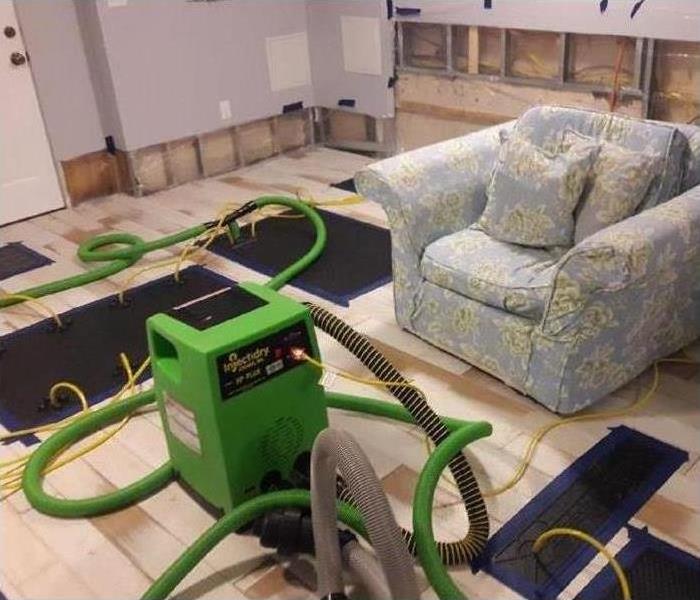 Water damage cleanup in a home in Jamaica, NY.
Water damage cleanup in a home in Jamaica, NY.
Make a Water Damage Claim in Four Easy Steps
A water damage claim is more likely to be approved if a policyholder takes measures to document damage and gather important information. These four steps will guide a homeowner through the process of filing an insurance claim.
1. Review the Policy
It is important to know what a homeowner's insurance policy does and does not cover. Keep in mind that standard home insurance policies only cover water damage due to a pipe burst or leak. An endorsement is usually necessary for sewer backup coverage, and an additional flood policy is needed for damage caused by heavy rains or rising bodies of water.
2. Call Your Agent
Call your insurance agent and let them know about the extent of the damage. It is a good idea to determine whether it is likely that you will file a claim before calling. If the damage is minor and you want to avoid a rate increase, you may want to obtain an estimate from a mitigation service first and pay out of pocket. Some insurance companies require agents and adjusters to report potential claims.
3. Document the Damage
If you plan to file an insurance claim, you will need proof of damage. Capture the extent of the damage in photos or on video. This documentation may be even more useful if you also have dated footage of the residence before the damage took place. It is also useful to gather receipts, dates of purchase, and the prices of damaged contents.
4. Get an Estimate
Contact a water damage cleanup company to obtain an estimate of the total cost of mitigation and restoration. Providing this information to an adjuster can expedite the filing process.
These steps will guide you from determining what your policy will cover to filing an insurance claim. Obtain an estimate from a water damage mitigation and restoration company in Jamaica, NY.
Why Is Flood Water Called Black Water?
6/25/2022 (Permalink)
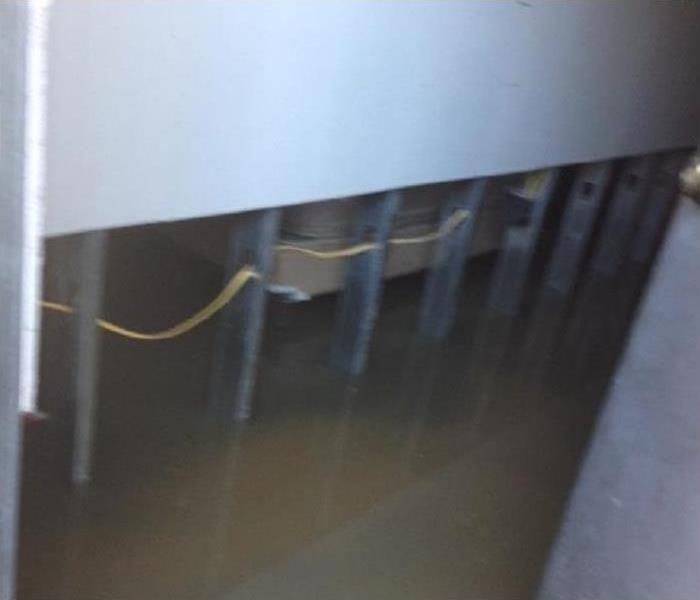 A flood in your home can result in Category 3 water damage.
A flood in your home can result in Category 3 water damage.
Black water is a term used to refer to Category 3 water damage. This grossly contaminated water may contain solid waste and other harmful substances. Learn more about Category 3 water and why flood damage calls for cleaning and disinfecting.
Categories of Water Contamination
Restoration professionals classify damage involving water into three categories. The scale ranges from clean water to highly contaminated water:
• Category 1 water is clean and treated.
• Category 2 water, or gray water, is contaminated but does not contain solid waste.
• Category 3 water, or black water, is highly contaminated and may contain solid waste.
The most common cause of Category 1 damage is a supply line break. Category 2 water often originates from an appliance or shower overflow. A flood or sewer backup can result in Category 3 water damage.
Contaminants in Category 3 Water
Category 3 water may originate from heavy rains, rising bodies of surface water or overflowing sewer mains. Water from any of these sources is exposed to many contaminants:
- Chemicals
- Heavy metals
- Pathogens
Damage restoration experts recommend wearing personal protective equipment, such as waterproof boots, gloves and even hip waders, when cleaning up this type of damage.
Risks Associated With Contaminated Water
Contaminated water has all of the contents necessary for microbes and fungi to thrive. Standing water can lead to mold growth within 24 to 48 hours. Homeowners should document damage and extract standing water as soon as possible to limit risks of infection and mold.
A homeowner dealing with Category 3 water damage should consider seeking professional assistance. Within hours or days, damage mitigation and restoration experts can eliminate standing water and clean and disinfect the affected portions of a residence in Ozone Park, NY. These specialists can also recommend whether to clean porous building materials and contents or to throw them away to reduce the risk of recontamination.
3 Tips To Prevent and Treat Water Damage Within a Business
6/14/2022 (Permalink)
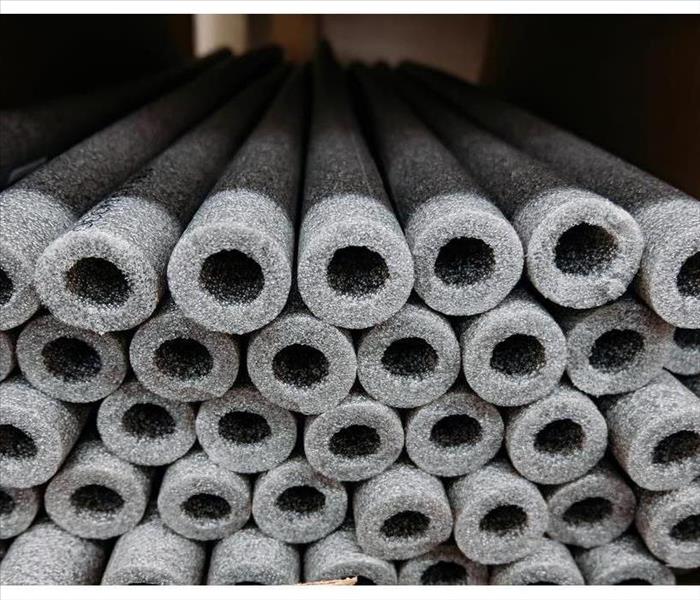 Cover your pipes with insulation to avoid water damage.
Cover your pipes with insulation to avoid water damage.
Ways To Prevent and Treat Water Issues
Having your commercial property consumed by water can disrupt business while repairs are made and can cause problems down the road if proper steps aren't taken. Here are three tips to help you both prevent and treat any water issues within your Jamaica Bay, NY, business.
1. Take Environmental Precautions
In some cases, water damage is preventable by taking into account weather patterns. For instance, extreme cold coupled with poor insulation can lead to broken pipes that create a mess throughout a building. Other environmental factors that could correlate with water issues include hail storms making roofs susceptible to leaks and major storms that produce flooding. Prepare your property as best you can for extreme weather.
2. Contact Water Damage Experts
Once you notice that water has infiltrated the property, immediately call a water cleanup and restoration company. These experts come highly trained and are best equipped to handle the cleanup process. The severity of damage may impact the restoration project's overall timeline, but the process always involves the same key components. Crews will extract excess water from the space, sanitize and dry out surfaces as well as lead the repair effort on damaged structures or items.
3. Perform Routine Maintenance
Following the restoration of the building, keep up maintenance efforts to prevent the issue from happening again. If you experienced flooding from a plumbing issue, for example, be sure to routinely inspect all pipes and drains for issues. Be proactive about checking for all possible causes of water issues as damage can occur in a number of ways. This maintenance can range from checking the roof for wear and tear, testing the fire sprinkler system and changing toilet hoses every few years.
Taking appropriate action is the best way to prevent and treat water damage. Prepare the building for any environmental causes of water, contact experts if a problem occurs and perform routine maintenance to prevent future issues.
3 Reasons To Own a SERVPRO Franchise
6/2/2022 (Permalink)
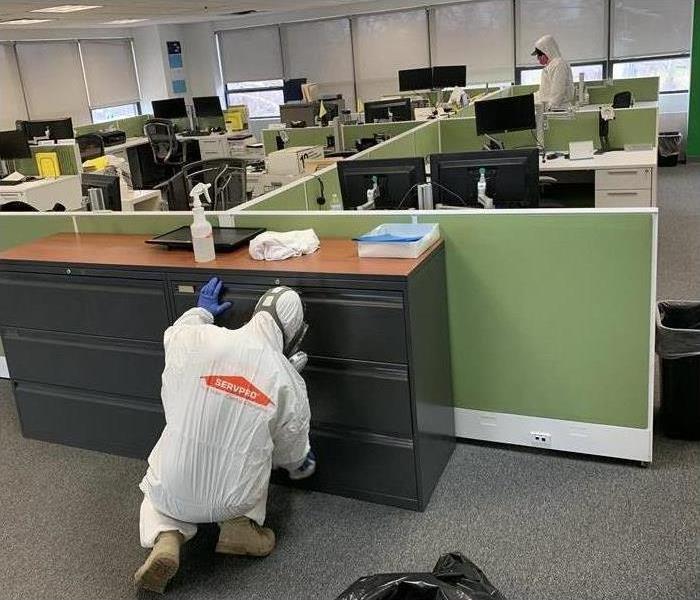 Commercial sanitation in Queens, NY.
Commercial sanitation in Queens, NY.
Benefits Of Owning a SERVPRO Franchise
If you are looking for a franchise that is likely to be successful no matter what happens in the future, a disaster recovery franchise may be for you. SERVPRO is an industry leader in the restoration and remediation markets for both residential and commercial customers. With more than 1,900 franchises across the United States, SERVPRO knows how to train its franchisees and help them to succeed. There are several factors that make owning a SERVPRO franchise an excellent choice.
1. Ongoing Training and Support
Although every SERVPRO franchise is locally owned, all franchises operate similarly and provide the same basic services. SERVPRO recognizes that many people will not enter the business with the knowledge and skills necessary to know how to restore properties after a disaster. That is why SERVPRO offers a new owner training program and ongoing support at its headquarters in Gallatin, Tenessee.
2. Certified Cleaning Program
Businesses in today's world need to evolve with the times. The covid pandemic has left people uneasy about the cleanliness of their environments. Many people have been afraid to go back into the office even after they were ordered to do so. SERVPRO has developed a cleaning process that is based on EPA and CDC protocols to destroy viral pathogens. This modern-day standard can help set your franchise ahead of the competition.
3. Helping Your Community
As an expert in the field of professional restoration and remediation services, your community will look to you when disaster strikes. With SERVPRO's quick, 24-hour support, your customers will be helped as quickly as possible, before even more damage has a chance to set in. If you are the type of person who enjoys helping other people during difficult times, a restoration company in Queens, NY, may be ideal for you.
There are many benefits to owning a SERVPRO franchise. When looking for a new franchise, it is important to find a market you think you will enjoy with a company that provides excellent ongoing support.
Electronics in the Aftermath of a Fire
5/27/2022 (Permalink)
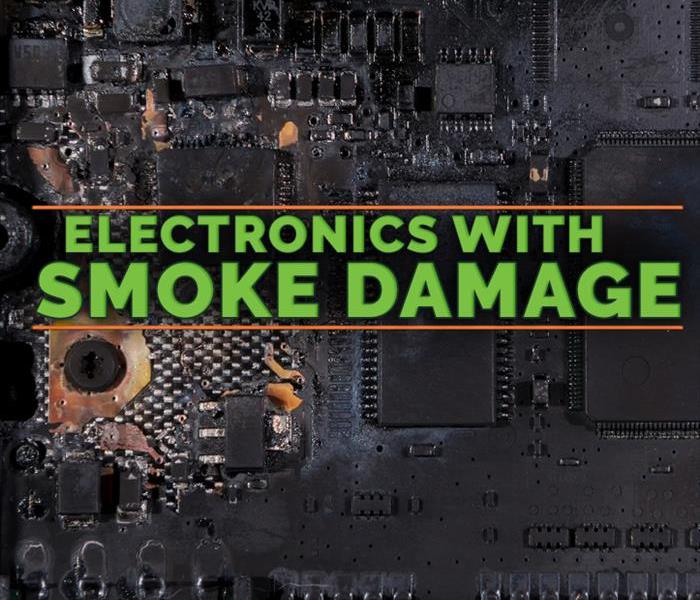 How does smoke damage electronics?
How does smoke damage electronics?
How Can Smoke Damage Electronics?
According to the National Fire Protection Association, 2019 saw firefighters responding to approximately 1.3 million fires, resulting in an estimated 14.8 billion dollars of damage. About 26% of these took place in home structures. Such events can be devastating, wreaking havoc. They can also be milder, depending on severity and response time. The contents of impacted buildings may suffer smoke damage along with scorching or burning. This may lead to a need for the services of a professional cleanup and restoration company in Rosedale, NY. One category of possessions that may be of special concern during fire cleanup is electronics, which are generally rather pricy and often more difficult financially to replace.
What Should You Do With Electronics After a Fire?
In order to minimize damage to devices like smartphones, laptops and hard drives, there are some tips you may want to follow during fire cleanup:
- Unplug any electronics and appliances
- Do not turn any of them on to avoid shorting out from water or too much soot
- Wipe residue off of the devices' surfaces
- Consult a professional for an assessment of any damage done
What Effects Does Smoke Have on Electronics?
When soot covers electronic gadgets, it can cause overheating, which can, in turn, lead to premature failure. The acidity in this substance may also corrode metal parts, leading to discoloration and a shortened lifespan. Smoke may also cause circuit shortages.
Can Electronics Be Saved After Smoke Exposure?
This depends on the severity of the harm done. In many situations, they can be preserved, but they need to be fully dry first. Swift action raises the likelihood of their survival. Even if one appears to be okay, the inner parts may still have sustained harm, so it is important not to simply assume they are fine because there are no outward signs of negative impact.
During fire cleanup, it is important to be cautious with electronics. Professionals know how to and have the equipment to properly clean your devices without causing further damage.
Preventing and Remediating Water Damage
5/27/2022 (Permalink)
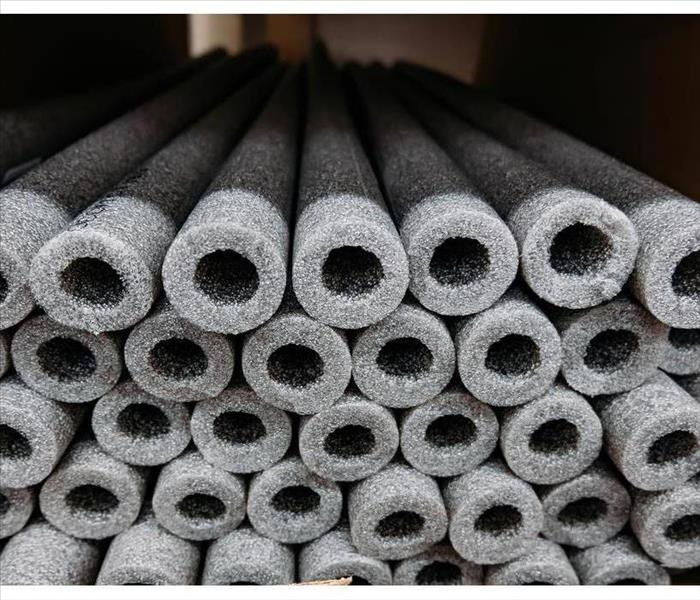 Insulate pipes to keep them from freezing and bursting in cold weather.
Insulate pipes to keep them from freezing and bursting in cold weather.
Steps To Prevent Water Damage In Your Home
Dealing with water in a home is frustrating because it can lead to structural damage and mold growth. Fortunately, there are ways to prevent this type of damage.
Prevent Water in Home
Although it is not always possible to prevent a broken pipe, there are steps you can take to minimize the likelihood of this problem. Insulate pipes to keep them from freezing and bursting in cold weather. Inspect your plumbing system and repair or replace pipes that are showing signs of deterioration, such as:
- Flaking
- Discoloration
- Cracks
- Leaks
Homes older than 50 or 60 years are more likely to need a plumbing upgrade than newer structures.
To prevent water coming in from outside the home, make sure the basement is well-sealed. If your basement floods frequently, install a sump pump to remove excess water before it accumulates. Inspect the roof and repair leaks. Make sure windows and doors are watertight. Clean gutters and make sure downspouts are directed away from the home. Have your lawn graded so that water flows away from the foundation.
Cleanup Water in Home
Unfortunately, it is not always possible to prevent water damage. Hiring a certified restoration company can help you get your residence back to normal quickly and safely. If there is standing water in your home, extract it quickly. Mold growth can begin within 24 hours, and the longer an item is wet, the more likely it is to suffer structural damage. If you are cleaning up after a flood or other source of contaminated water, sanitize all affected areas. If you are dealing with clean water, such as during a pipe cleanup, you won’t have to worry about bacterial growth unless the water has been stagnant for at least a day.
Protecting your Queens, NY, home from primary and secondary water damage is key to maintaining the overall health of your home. Take steps to prevent water intrusion in the first place, and act quickly if you do experience a broken pipe or other issues.
When You Should Replace the Various Pipes in Your Home
4/25/2022 (Permalink)
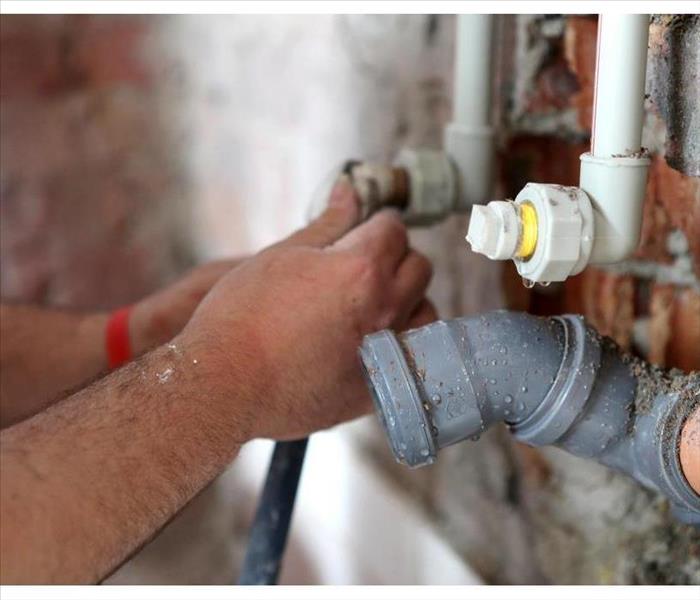 Pipes do not last forever.
Pipes do not last forever.
When Should You Replace the Pipes in Your House?
Pipes do not last forever. Over time, you may discover supply line damage. This could lead to a bathroom leak that necessitates cleanup and restoration services. To prevent any leaks, you should get your older pipes replaced. When to do so depends on the age of your Whitestone, NY, home and plumbing system.
Washing Machine Hoses
Many water losses result from leaks in the washing machine. To keep the appliance functioning and prevent flooding, you should replace the supply hose every three years. You should also replace the hose if you notice any of the following:
- Leaking water
- Rust
- Bubbling
- Obvious signs of damage such as kinks and cracks
Supply Pipes
Even though these pipes have to deal with constant pressure, supply line damage typically only occurs in older homes. In fact, copper pipes can last 70 to 80 years. Brass and galvanized steel pipes survive even longer than that. Still, if you do notice a supply line leak, you should get it checked out immediately.
Faucets
Faucet lines typically can be repaired without having to replace the pipes. However, if you find yourself constantly fixing the faucet, it may be time for an upgrade. Some people also replace their faucet pipes purely for efficacy reasons.
Drain Pipes
Cast-iron drain pipes are meant to last 80 to 100 years. Yet if your drain lines are made of plastic, they may only last 25 years. A storm or tree root can easily damage these lines, as well.
Toilet Pipes
Different parts of your toilet last varying amounts of time. The wax seals only need to be replaced every 20 or 30 years. However, the valves, fittings, flappers, and levers have a lifespan of just four or five years.
Major supply line damage usually occurs only when those pipes are old. However, other pipes in your home can wear down over time, especially lines made of plastic. Those lines should be replaced periodically before a huge leak occurs.
A Closer Look at Types of Fire Alarms
4/20/2022 (Permalink)
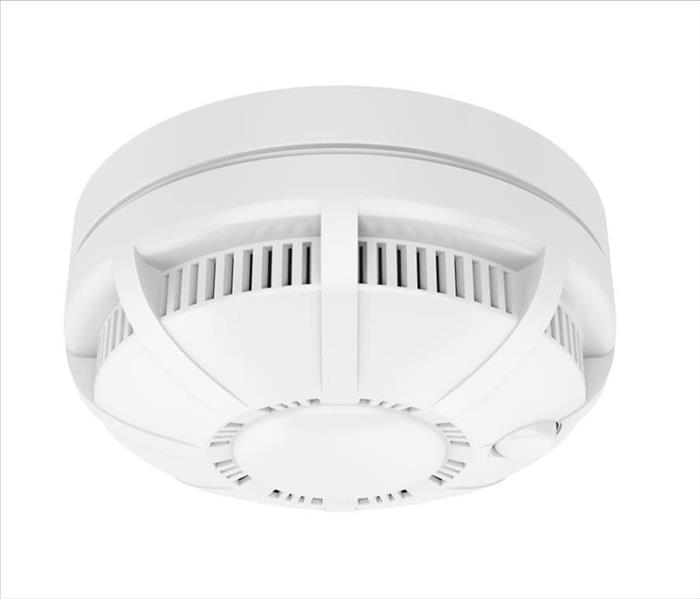 An Ionization alarm excels at detecting fires with open flames.
An Ionization alarm excels at detecting fires with open flames.
Two Main Types of Alarms On The Market
Home fires in the U.S. cause many injuries and millions of dollars in property damage. These devastating fires come from many sources, with the following causes among the most common each year:
- Cooking
- Heating appliances
- Electrical
- Smoking
- Candles
- Chemicals
The good news is that all of these fires can be detected by a modern fire alarm. When installed in a home in Jamaica Bay, NY, these units alert occupants of the presence of danger by loud noises and sometimes by visual signs. Many types can be purchased online and in stores. All are effective in reducing fire deaths and minimizing fire damage to property. Here is a closer look at the two main types of alarms on the market.
An Ionization Alarm
This type of fire alarm excels at detecting fires with open flames. It operates by using a bit of radioactive material inside the unit that sits between two electronically charged plates. A current of ionized air runs between the plates. When smoke enters this area, it breaks the current and sets off the alarm. These units should be installed in every bedroom and at least one on each floor of the house, including basements and attics.
A Photoelectric Alarm
This type of fire alarm is better at detecting smoldering fires. It uses a beam of light in a chamber and a light sensor. When smoke enters the chamber, it reflects the light toward the sensor and triggers the alarm. This technology is a solid choice to prevent smoke damage to a home. For even more protection, a person can get a combination alarm that uses both technologies just described. In the case of fire damage, a professional fire mitigation company can restore a home to its original condition. An experienced crew employs advanced equipment and proven techniques to clean and restore a home. Along with working fire alarms, a mitigation franchise is part of a solid protection plan against fire damage.
4 Tips To Prevent Mold in Your Rental Home
4/5/2022 (Permalink)
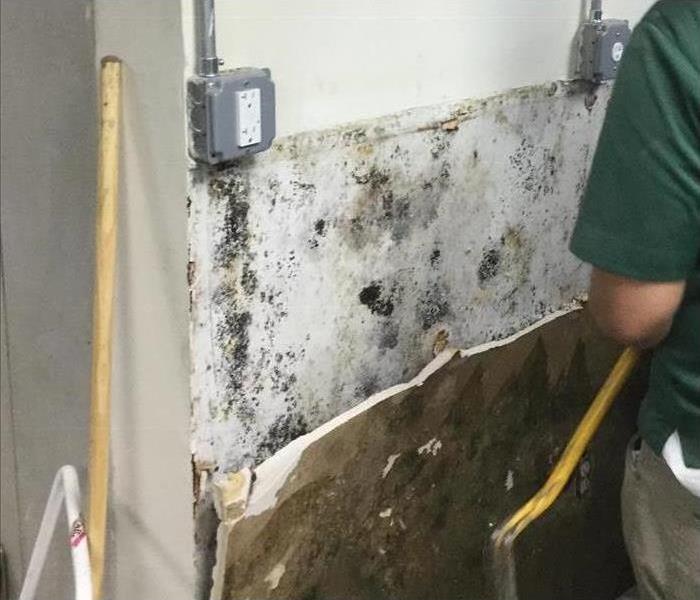 Commercial mold growth in Flushing, NY.
Commercial mold growth in Flushing, NY.
Tips To Inhibit Mold Growth
Your rental home in Flushing, NY, is an important investment and source of income, so it makes sense to keep it in top shape year after year. Mold prevention is key to protect the building materials — both inside and out — from secondary water damage from excess moisture and humidity. The time and effort you put in now will save you from future headaches, expenses, and the potential loss of rental income.
Here are a few important tips to inhibit mold growth:
1. Measure the moisture levels inside the home with a digital hygrometer.
This inexpensive device should be set somewhere at least three feet off the ground in the area you want to measure. Though accurate readings can be determined in a few minutes, they can tell you the average humidity levels over the past 12 hours. Any reading above 60% is an indication that the area is wet somewhere and will warrant further investigation.
2. Run a dehumidifier in warm, rainy months and a humidifier in cold, dry months.
Your tenant will need to monitor them daily, adding or removing water as the need arises. It is also suggested that they turn off the water and lower their heat when not in use, though turning the heat off completely isn't recommended.
3. Assess the drainage around the building outdoors.
Make sure the ground isn’t sloped towards the foundation or that the downspouts aren’t pooling water beneath them. Regrading the landscape can be a quick fix or a much bigger project, but not addressing the problem will most likely lead to water damage.
4. Install and maintain household exhaust fans.
Each bathroom should be equipped with a working fan and kitchens should have an exhaust hood over the range. If your rental home has an attic, a fan will help regulate the temperature and humidity as well.
In most cases, mold prevention is an easy, low-cost way to protect your rental home and your tenants from the hassles and damage that excess moisture can cause. If you’ve discovered mold and need the help of a professional, call a mold remediation specialist in your area.
Basement Sewage Backup: Five Causes
3/23/2022 (Permalink)
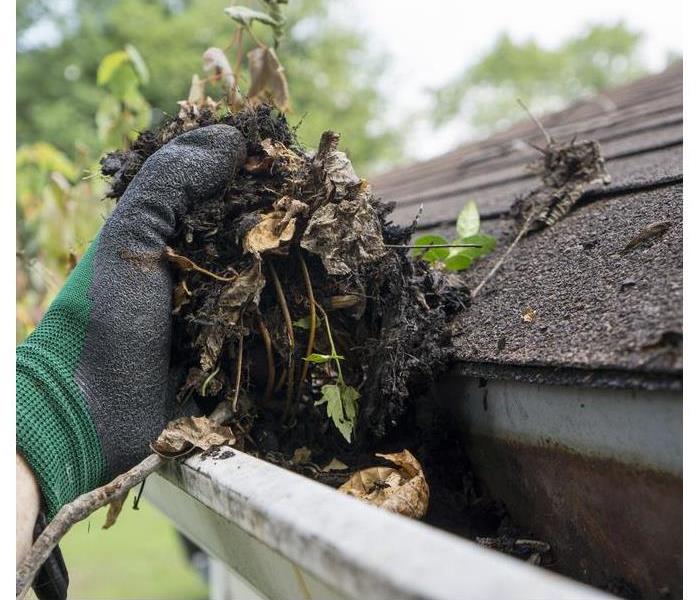 Keep your gutters clean and avoid an overflowing basement.
Keep your gutters clean and avoid an overflowing basement.
Common Causes Of a Flooded Basement
There are a number of common causes of a flooded basement, many of which stem from storm-related issues. Understanding and knowing how to fix them can help you prevent floods in the long run. Here are five common causes of basement sewage backup in Queens, NY, houses.
1. Gutters that are overflowing. If you are having problems with your downspouts or haven’t cleaned your gutters recently, they could be overflowing and backing up into your basement. Get your gutters cleaned and consider a new or second downspout to help remedy the situation.
2. Water at the surface. If you have surface water draining near your foundation during a heavy rain, it could be causing backup issues. Consider getting professional help from a reliable, licensed contractor to fix such issues.
3. Sewer backup. During heavy rainstorms, municipal sewage systems can back up and cause a flooded basement. These backups may be mostly out of your control, but make sure that your individual lines are clear and in top shape at all times.
4. Perimeter foundation drain backups. If you have this type of drain around your home’s foundation, it could back up with storm water. Contact a professional contractor for repair help if this is the case.
5. Irrigation systems. If your home and yard have been subjected to heavy rainfall lately, your irrigation system may be overloading it and causing floods. Replace yours with one that has a rain gauge if this seems to be a problem for you.
If you are already facing a flooded basement, your best bet is to call a professional residential storm damage remediation service in the Queens, NY, area that can help you figure out a repair plan and work on salvaging damaged goods. Now that you know what may have caused the flood, you are better prepared to deal with such emergencies in the future - and possibly prevent them altogether.
Creating an Effective Office Fire Escape Plan
3/18/2022 (Permalink)
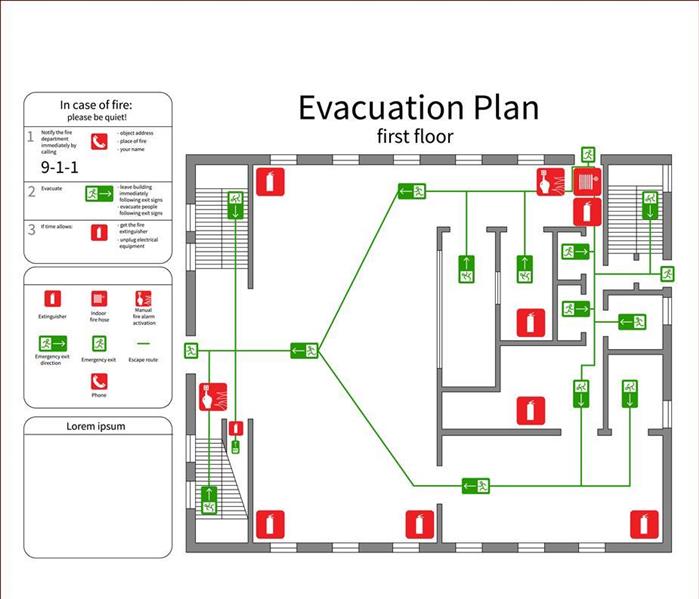 Evacuation route planning.
Evacuation route planning.
Developing a Fire-Escape Plan for Your Office
With the hectic daily operations of any business in Briarwood, NY, it’s often difficult to carve out time to prepare for emergencies. This is particularly true with smaller companies that don’t have mandated drills or contingency plans. However, it’s essential for any business owner to have an emergency escape plan in place to protect workers and assets. The following steps will help make sure you are prepared.
1. Assign Roles
The first step in creating a fire escape plan is to assign various workers to be in charge. A coordinator needs to be accountable for fire drills, extinguisher training and evacuation route planning. Every worker should know where the fire alarms are located so all employees can be immediately alerted to a problem. If your office has various floors, each floor should have a person designated to clear it and ensure workers are not left behind. It’s also a good idea to plan help for any employee who may have difficulty getting down the stairs.
2. Create a Chain of Command
Once employees are safe and the fire department is in control, there should be a person in charge to communicate protocols. This involves having updated contact information for all employees, so that instructions on contingency plans can be quickly sent out via a call tree or mass email. The supervisor or designee should have an offsite checklist with contact information to call the insurance company and a competent fire restoration company.
3. Prevent Problems
Although a good fire escape plan is essential, you always hope you won’t need it. The fire department will do an annual inspection of your property, so use this as a tool to identify areas of concern. Consider moving essential equipment or files into fireproof rooms and safes. Finally, make sure all exits are clearly marked and easily accessible.
Every business should have a detailed fire escape plan. It involves designating particular employees to be in charge of training and evacuation routes. If you have a clear chain of command, you will be prepared for potential fires and have the peace of mind that you are keeping your employees safe.
How To Maintain Fire Sprinklers in Your Building
3/8/2022 (Permalink)
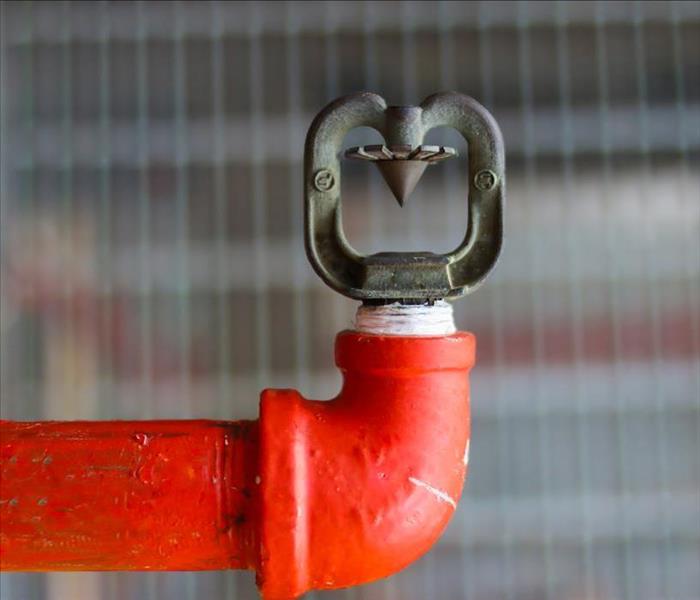 All deluge system gauges should be inspected weekly.
All deluge system gauges should be inspected weekly.
Fire Sprinkler Maintenance Steps
A properly functioning sprinkler system can save lives. Sprinkler maintenance should be part of the safety plan for every building. Regular maintenance of sprinkler systems is essential in the prevention of accidental activation. Locate a sprinkler inspection company in Howard Beach, NY, that can schedule and perform these necessary maintenance steps.
1. Weekly Maintenance
A designated member of your staff trained in the standards and local codes can perform the weekly maintenance to ensure there is proper air and water pressure on the dry, pre-action, and deluge system gauges. All gauges should be inspected weekly, or possibly monthly depending on your system. Wet pipe systems should be checked monthly. All inspections should include looking for signs of physical damage.
2. Quarterly Maintenance
Outside of the weekly maintenance, a licensed fire protection technician should conduct all testing and maintenance. Every three months all alarm systems should be inspected as well as the connection to the fire department.
3. Yearly Maintenance
Yearly sprinkler maintenance includes the inspection of buildings, bracings, pipes, fittings, and fire sprinklers. In addition to physical inspection, several things should be tested each year. Control valves, alarm switches, gauges, backflow preventers, anti-freeze loops, fire department connections, and visible piping should all be inspected and tested to make sure they are functioning properly. Running a test for dry, pre-action, and deluge systems is also recommended on a yearly basis.
4. Maintenance Every Five Years
Hoses, connections, and piping should be inspected every five years. Testing of standpipes, internal pipe inspections, and obstruction investigations should also be conducted every five years.
A functional and reliable sprinkler system should be a priority for every building owner. They act as both a warning system and a lifesaver. Accidental activation of a sprinkler system can cause costly water damage that may require water damage restoration. Keeping up with regular sprinkler maintenance can help prevent the need for cleanup from easily avoidable water damage.
When the Bowl Runs Over
2/24/2022 (Permalink)
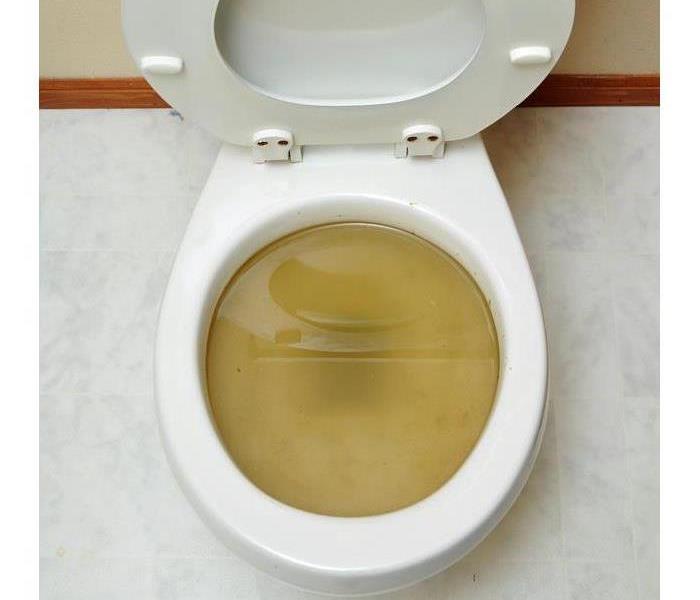 Nobody wants to deal with a gurgling toilet.
Nobody wants to deal with a gurgling toilet.
Sewage Damage In Your Business
The scene caused by an overflowing toilet is all too familiar to many Rosedale, NY, business owners. If you're reading this, you have probably stopped the flow coming from the flooded toilet. If not, commercial toilets usually have a shut-off valve that you can locate and use a screwdriver to activate. If you can't find it, a sewage company should be able to stop the water easily. Act quickly, because this kind of sewer damage can cause:
- Health effects
- Facility water damage
- Lingering bad smell
- Secondary damage
Immediate Action
Your first step should be identifying the problem. Most situations involving sewer damage are far from pretty, but some are worse than others. If there's a presence of feces, for example, you should take extra care if attempting cleanup. If you aren't going to handle the problem yourself, you should ideally rope off the whole bathroom until help arrives.
Secondary Steps
After you determine the nature of the issue and take protective measures, it's time for cleanup to be performed. It's also important to make sure the area is completely sanitized and dry during this stage to prevent issues later on from lingering pathogens or high humidity.
Other Causes
Sometimes, damage outside of your facility can cause backflow that pushes material back through the lines. While this is less common cause of flooding than a clogged toilet or broken fixture, it does happen. Contact your utility company in cases like this as soon as possible. They are likely to have specific advice for Rosedale, NY, businesses in your situation.
Nobody wants to deal with a gurgling toilet, but this problem is an unfortunate fact of doing business. Sewer damage might come from inside or out of your building, but either cause needs to be dealt with as soon as possible. It's a good idea to prevent long-term issues and potential liability by dealing with all water issues decisively.





 24/7 Emergency Service
24/7 Emergency Service
























